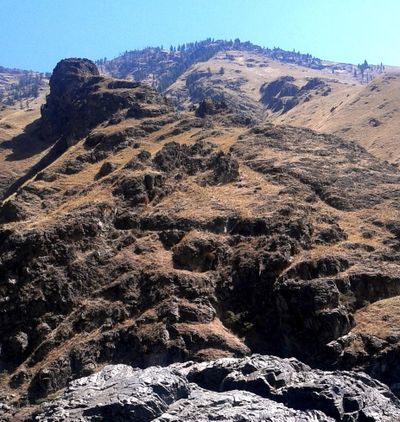Chasing the chukar myth

Supposedly, the hot weather, lack of moisture and various other conditions have left the population in poor shape, providing few opportunities for hunters foolish enough to pursue them. Some reports suggest other factors may be at play, such as predators and the like, but as far as I’m concerned, it’s all hogwash.
Experience has left me to view chasing chukars as a modern-day equivalent of the classic snipe hunt – a ruse of fathers and friends to subject novices to a misery unparalleled by any other type of bird hunting in the world. I would rather hunt Alberta geese in shorts and sandals during sub-zero temps in January than hike the heated hills of the Snake in pursuit of a bird that, I’m quite sure, does not actually exist.
When I was a boy, I trusted everything my father told me, having no reason to believe otherwise, much less suspect I was the subject of some grand prank. My father told me chukar hunting would build character, make me strong and help me become a man. It was akin to his recommendation of eating hot salsa and habanero peppers to put hair on my chest – a fruitless endeavor that did nothing but make my eyes burn and nose run, and ultimately left me with the same patchy pattern of adolescent fuzz I started with. At age 45, I have yet to develop the thick mat of manly chest hair promised – which ironically enough, equally matches my success hunting chukars.
Dad kept me interested, though, baited with stories of land lousy with fowl, occasionally presenting what looked to be a dead bird, possibly a chukar, in the back of his truck as proof. Looking back, I’m convinced one of his best friends, a taxidermist, was in on the joke. Mike’s skills are considerable, and it wouldn’t take much to make a Hungarian partridge look like a chukar.
Until military service pushed me from the Northwest, my unfortunate naivety drove me into several years of wretchedness. Eager to please and to grow into a man, I pounded the hills near Lewiston and Weiser, Idaho, year after year, hopeful I’d get lucky enough to shoot, or at least see, one of these elusive birds. Misery ensued. Exhausting climbs on near-vertical slopes guaranteed debilitating leg cramps, typically simultaneously in both thighs, leaving me to flop around on the hillside like a perch on the ice.
My lungs screamed for oxygen during high-altitude ascents, compounded by a nasty, teenage smoking habit and an aversion to exercise. I quit smoking several times on those hills, burying more than a pack or two in the scorched earth, but sometimes electing to simply chuck them into the hellish canyons from which I had just emerged.
Descents were equally perilous, as several encounters with rattlesnakes sent me sprinting panicked downhill at full speed, with only rocks and sumac brambles to arrest my inevitable fall. I endured this abuse for years – with nothing to see or show. Ever.
Upon my recent return home, Dad wasted no time rekindling the myth, asking if I’d like to go chukar hunting with him again this fall. I was in better shape, no longer smoked and ran 15 miles a week regularly. With Dad pushing 70 and slowed by a few surgeries, I was pretty sure I could keep up with him if I wanted to, but respectfully declined.
This year, I told him, I had my sights set on bagging a purple unicorn. I figured my chances were just as good.